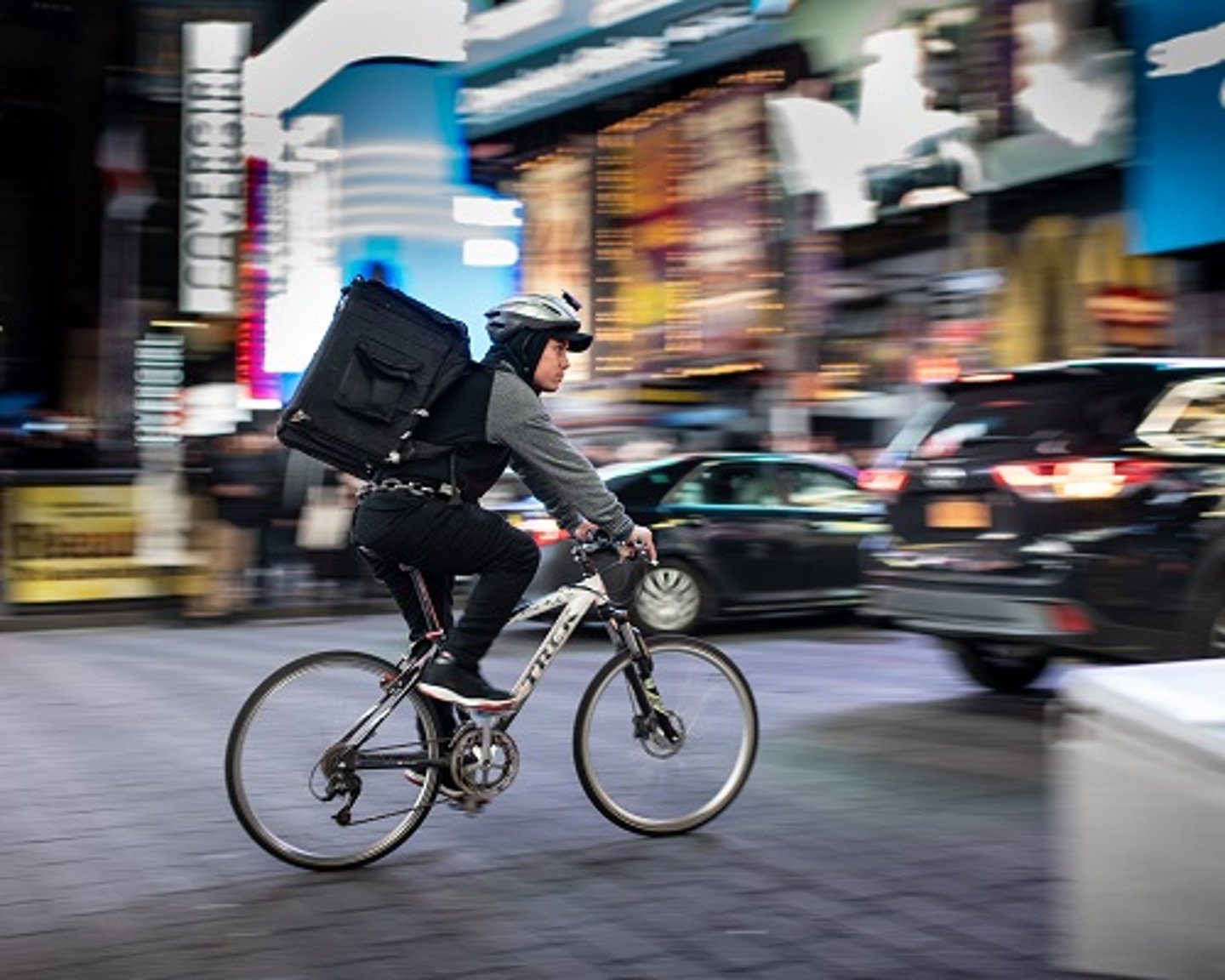5 Operational Decisions that Fuel Off-Premise Dining
Restaurant delivery has moved way beyond the fad stage and is now being openly embraced by operators from all restaurant concepts. Whether it’s fast food, fast-casual, casual or even fine dining, operators now see off-premise dining as a possible savior to waning dine-in customer preferences. Delivery has always been a convenient way to get food, however, tech advancements over the last decade have enabled operators to address the needs of in-house diners while simultaneously and seamlessly tending to the growing needs of those who choose to dine outside of their brick-and-mortar locations
Around 86% of guests use off-premise options at least once per month, which accounts for the more than 200 billion in annual earnings. Enterprising operators see the trend and know it provides a new way to engage with an increasing demographic. However, according to the National Restaurant Association, around 29% of businesses aren’t quite prepared for off-premise dining.
Those operators who struggle to meet the growing off-premise demands fall into a few buckets. Those include:
- Restaurants that haven’t integrated their FOH and BOH
- Operators who haven’t made a firm choice between working with third-party delivery services and conducting their own deliveries
- Restaurants that haven’t considered, then implemented one or more ways for guests to place to-go orders
- Operators who haven’t streamlined their menus for off-premise dining
- Restaurants that haven’t addressed capacity management and how staff and the kitchen will handle the simultaneous demands of the two sides of the dining coin
- Fortunately, operators can make decisions now to help their restaurant meet the various delivery options. Several operational areas must be addressed, but capacity management is probably the most critical.
Decision One: How to address restaurant capacity management
As operators think through their off-premise dining, processing the order may not be the first move, but it is the most important. An operator can choose two ways to process orders —analog and digital. When looking through the analog lens, a restaurant would pass the back-of-house handwritten tickets. By contrast, a digital transmission of the order is delivered through an app, website portal, or inputted manually by whomever on the staff receives the order. The problem with paper tickets is that they can easily get lost or misinterpreted, this can create a serious problem for guests off-premise guests waiting on their meal to arrive.
Fortunately, kitchen automation software that incorporates capacity management tools can help prevent confusion among the staff without losing quality. In short, capacity management defines your restaurant’s peak performance, the ability of your operation to balance quality and output. One area that is critical to developing successful off-premise results without compromising what’s going on within the four walls of the business is order throttling. Here are a few ways in which order throttling can ease the growing pains of adding a whole new aspect to the business.
Order throttling is just one way that capacity management can aid restaurants that want to tap into the off-premise market or for restaurants that are currently struggling to get their operational arms around the added loads to their business.
- Being able to throttle off-premise orders when demand is high without disrupting in-store tickets.
- Having the ability to increase quoted delivery times when demand is high, and then decreasing those delivery times when kitchen demands lighten.
- Being able to accurately quote those delivery times without using arbitrary numbers based on current volume.
- Having the ability for the kitchen to know when to start an order and when to bump it.
- Capacity management tools are there to help maximize and sustain a restaurant to its fullest potential. When capacity management goes wrong, customer orders can back up, which can hurt the business operation, guest satisfaction, and bottom line.
Decision Two: How to communicate with guests
Off-premise dining communication is more than about getting the first online or app order. A restaurant must communicate with the guest from initial order and on through the final delivery. Starting at the beginning, the question to ask is how the customer is going to communicate their off-premise dining desires. Will those customers make an order through a digital portal like an app or a website, or will it be call-in orders only?
The mean average annual income of a hostess in the United States is approximately 23.5K. The cost of a website is relatively variable, depending on the complexity of the chosen site. The average price to develop an app is around 171K. Operators might also consider one of the many available third-party online ordering systems, which range in cost depending on customer needs.
Decision Three: How best to streamline the menu
From a guest’s perspective, knowing what’s on the menu is their first decision point. No matter how an operator chooses to connect with patrons, ensuring that the guest is informed as to what’s on the delivery menu remains crucial. Sites like Google My Business, Yelp, or various social media platforms offer a variety of opportunities for informing guests about what they can order, and for the operator, how those guests will place that order.
Operators should not be afraid to try different menu engineering options. Look to the menu items that are easiest to prepare, maintain, and package promptly without losing quality. Take soup, for example. It’s not the easiest menu item to package and transport considering that it must be served hot. For this reason, it might not be the best to-go menu item for delivery. If the menu isn’t optimized for delivery it could lead to a dip in guest satisfaction.
Decision Four: Who makes the delivery?
Until recently, restaurateurs faced challenges in providing off-premise dining options. If a restaurateur hasn’t offered delivery before, how does one make that leap? Is it better to hire someone to drive for the restaurant? Will that decision necessitate the need to take on insurance for the restaurant’s drivers? How will advertising to customers be handled once delivery is offered? And most importantly, how is it possible to determine if restaurant-initiated deliveries will be worth it?
Fortunately, with the advent of companies like DoorDash or UberEats, owners and operators have third-party vendors to supplement their delivery efforts. Third-party vendors allow restaurateurs to dip their toe into the market, to find out what works and what doesn’t without having to take the plunge into developing their own system. Fees vary depending on which company is chosen, and that applies to everything from marketing to commission.
Decision Five: How to guarantee customer satisfaction
The yin to the yang of third-party delivery options is how to ensure customer satisfaction when handing over part of the process. The biggest catch here is that from the time the kitchen completes the order until it is delivered, there remains limited control over the product. Restaurant staff can maintain quality while it waits for the driver, by ensuring that the restaurant has an appropriate storage and pick-up location. Some kitchen display system options allow for a sticky printer or tag-on-touch functionality, which provides tools for restaurant staff to accurately identify completed orders and ensure that each item gets to the right customer.
Many companies use order tracking tools that offer customer insights around expectations. While an operator may not be able to provide that with a third-party option, it is possible to use restaurant data analytics that help identify which driver or service works best for operational needs and to build promises to customers appropriately. Follow up with customer satisfaction whenever possible, and tweak operations accordingly.
About the Author
Amber Mullaney, QSR Automations' VP of marketing sets strategies and implements the overall promotional efforts for the company, which markets a platform for kitchen automations and guest management services. She graduated from The University of Houston with a Public Relations degree and enjoyed working in the healthcare technology field before transitioning to restaurant technology.
Delivery Photo by Brett Jordan on Unsplash



